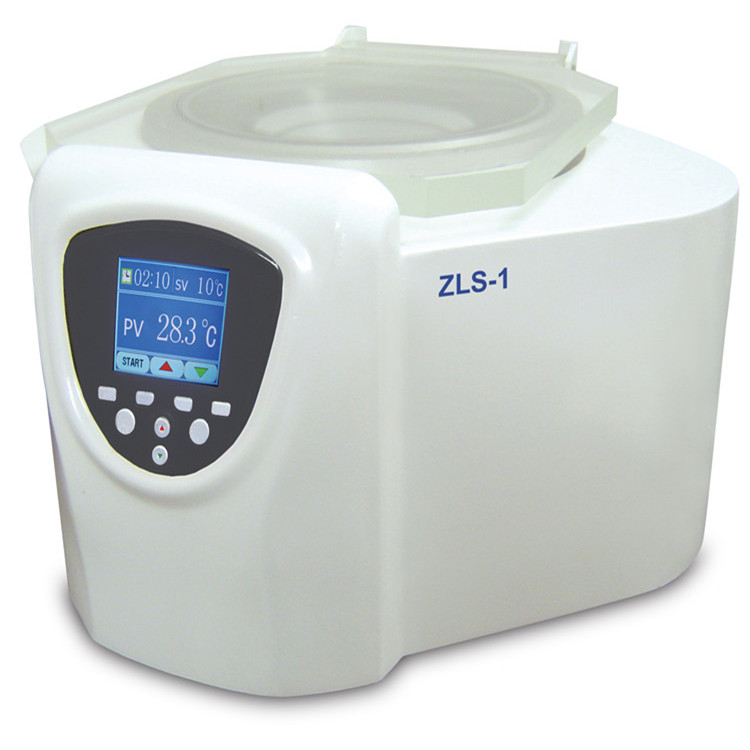- Benchtop High Speed Centrifuge
- Floor high speed centrifuge
- High speed refrigerated centrifuge
- Tabletop Low Speed Centrifuge
- Low speed refrigerated centrifuge
- Free-standing Low Speed Centrifuge
- Laboratory centrifuges
- Medical centrifuge
- Automatic decapping centrifuge
- Petroleum centrifuge
- Large capacity centrifuge
- Hematology Centrifuge
- PRP centrifuge
- Refrigerated Centrifuge
- Blood Bank Centrifuge
- Mini centrifuge
- Special centrifuge
- Centrifuge rotors
- Electronic Balance
- Vacuum Centrifugal Concentrator
- Moisture Analyzer
We all know to do pesticide residue analysis, drug screening, liquid phase, gas phase, and other experiments and mass spectrometry pretreatment, need to concentrate the sample solvent, then evaporation, drying, concentration and purification methods, what are commonly used do you know?
First, air blowing steam method
Air flow steam method is to blow air or nitrogen into the container containing purification liquid, constantly reduce the liquid surface vapor pressure, so that the solvent evaporation and achieve the purpose of concentration. This method is simple to operate, but the efficiency is low. It is mainly used for the concentration of small volume, low solvent boiling point solution, but high vapor pressure components easy to lose. For residue analysis, nitrogen is generally used as purge gas because most of the components to be measured are not very stable. For pesticides with high vapor pressure, the operation must be carried out below 50℃. The final residual solution can only be removed at room temperature and in a nitrogen flow to avoid the loss of pesticides.
Second, decompression and concentration method
Some of the components to be tested are thermally unstable and easy to decompose at a higher temperature. The decompression concentration is adopted to reduce the boiling point of the solvent, which can quickly concentrate to the required volume and avoid the decomposition of the tested substance. Commonly used reduced pressure concentration device for all glass vacuum concentrator, also known as kD concentrator, this instrument is a kind of commonly used vacuum distilling device, when the instrument enrichment purification liquid has the advantages of low concentration, low temperature, speed, losses and characteristics of easy to control body code you need for analyte on the thermal instability the concentration of the extract, especially suitable for analysis of pesticide residues in the concentration of the sample solution. In addition, it can also be used for purification distillation of solvents.
Three, rotary evaporator concentration method
The rotary evaporator is electronically controlled to rotate the flask at a suitable speed to increase the evaporation surface. The evaporative flask can be placed under negative pressure by vacuum pump during concentration. Dressed in evaporation flask extract, under the condition of heating in water bath or oil bath, because at the edge of the decompression under rotation, heating, to make the solution adhesion of evaporation inside the bottle wall form a thin layer of liquid membrane, diffusion, increased the evaporation surface code, and, because of the negative pressure effect, the boiling point of solvent is reduced, further improve the efficiency of evaporation, at the same time, The evaporated solvent is condensed in the condenser and returned to the receiving bottle. Therefore, the evaporation efficiency of this method is doubled compared with that of the general evaporation device, and it can prevent the explosion boiling and the oxidation and decomposition of the measured component. The evaporated solvent is condensed in the condenser and returned to the solvent receiving bottle, making the solvent recovery very convenient. The rotary evaporation concentrator is composed of mechanical parts, electric control box and glass instrument. At present, there are many manufacturers of rotary evaporator with various models. Before use, install according to the product manual. When in use, the installed rotary evaporator is connected to the vacuum pump with rubber hose, and the vacuum pump is opened to test the negative pressure for testing the air tightness; Connect the condensate pipe and open the condensate valve; Adjust the lifting rod, so that the evaporator bottle is placed in the prepared water bath; Plus 1/2 ~ 2/3 sample bottles to evaporation, close the injection port of the valve and open a rotary control, when definite concentration to a certain body, stop rotating, remove the evaporation bottle of liquid poured out, remove the solvent bottle, recycling bins will be recycled mixture, then the good rotation and accept bottles, continue to add sample evaporation, repeat the above process appropriate to purify liquid enrichment completely.
Four, vacuum centrifugal concentration method
Vacuum centrifuge concentration is a method combining centrifuge, vacuum and heating. The sample is centrifuged in vacuum state, and the solvent is captured by ultra-low temperature cold trap, so that the solvent can quickly evaporate to achieve the purpose of concentration or drying the sample. The centrifugally concentrated samples can be easily used for a variety of qualitative and quantitative analysis. Vacuum centrifugal concentrator is mainly composed of centrifugal main machine, cold trap and vacuum pump.

Hunan Husi Instrument Co. Ltd【Vacuum centrifugal concentrator ZLS-1】
Conclusion: The vacuum centrifugal concentration method can concentrate the medium, high and low boiling point solvents by vacuum control, which can not only guarantee the sample activity, but also several times faster than the lyophilization, which is much larger than the sample volume treated by rotary evaporation and nitrogen blower.
- PREVIOUS:From the editor, what do you know about vacuum centrifuge concentrators?
- NEXT:Discussion on the rapid detection method of milk fat!!
